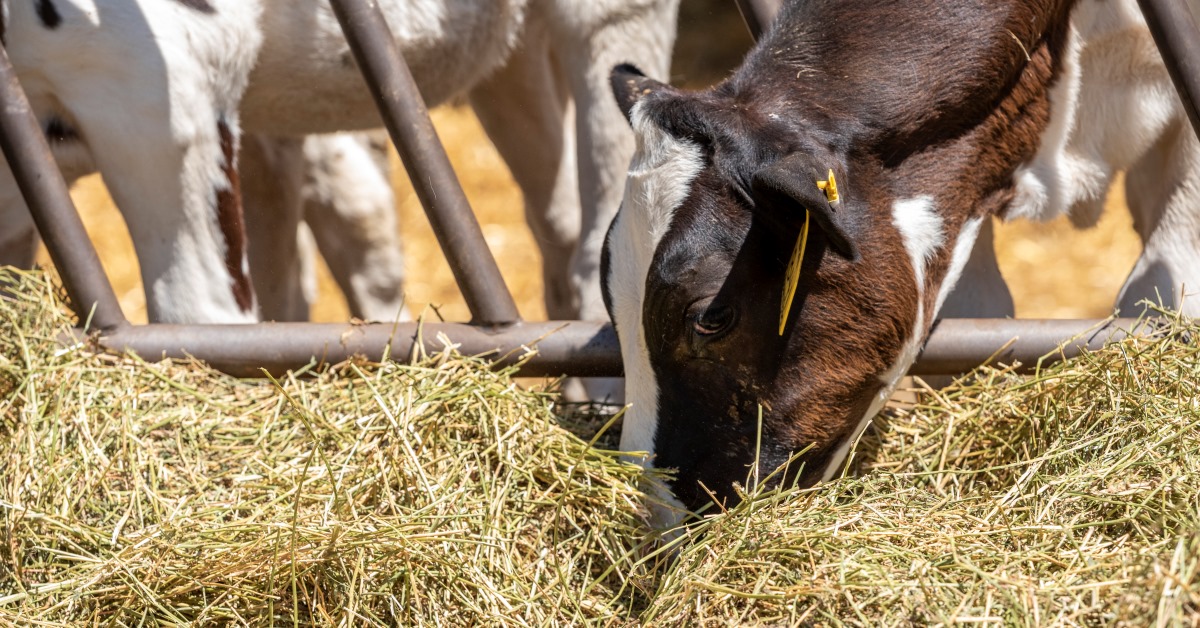
Utilizing high-quality forages presents the largest opportunity for ration cost-savings on-farm. While still important when determining forage quality, the dry matter, protein and/or starch content are not the only measures to consider. Another measure of forage quality that should be considered is fiber digestibility. Feed intake, rumen volatile fatty acid profile, rumen pH and rumen microbial protein production are all directly impacted by digestible neutral detergent fiber (NDF). As a result, seed companies have been developing new varieties, such as low-lignin alfalfa, BMR corn silage and sorghum silage, among others, for higher fiber digestibility.
Forage quality and digestibility can be affected by many conditions, some of which we can control and others we cannot.
Uncontrollable factors:
- Soil type: Sandy, clay or black loam soils can impact water and nutrient retention, soil compaction, organic matter content and nutrient release.
- Growing conditions: Sunlight, temperature and water can have a major impact. Fiber digestibility can be influenced by the level of light, as it is needed for photosynthesis. High growing temperatures can also promote lignin formation, resulting in higher fiber digestibility for grasses and legumes raised under cooler conditions. Wet conditions can also delay planting and/or harvest, which increases plant maturity and decreases digestibility. However, heat and drought stress increase fiber digestibility while decreasing yields.
- Frost: This becomes important when forages require more time for growth, as a killing frost stops leaf and plant growth, leading to decreased dry matter. Depending on the crop’s level of maturity, this can result in greater levels of NDF with higher fiber digestibility.
- Disease or weed damage: Without the proper application of a fungicide or herbicide, growing conditions can favor fungal or weed growth. Fungal growth reduces plant growth and yields, leading to lower fiber digestibility. Forages with a prevalence of weeds generally have a lower fiber digestibility and are lower-quality.
Controllable factors:
- Leaf-to-stem ratio: This is a reflection of quality, as the leaf contains more nutrients and has better digestibility while the stem is higher in fiber.
- Grain-to-stalk ratio: This measurement applies to corn silage and other cereal grain silages. The concentration and digestibility of fiber decline as the starch level increases.
- Stage of maturity: Farmers have the most control over this factor. The stem and stalk of the plant become more lignified as the plant matures. This leads to decreased NDF digestibility.
- Fermentation losses: Fiber digestibility can decrease if storage is not adequate. A silage inoculant can help to prevent dry matter and energy losses while also introducing enzymes that increase fiber digestibility.
- Wild yeast and mold growth: The presence of wild yeast and/or mold can decrease the energy concentration and fiber digestibility, as microorganisms feed on the sugar, starch and digestible fiber.
Over the past year, farmers have faced many uncontrollable factors that affect forage quality. At the end of last year, 41% of the United States was experiencing some level of drought. Much of that drought was in the western United States, but in 2021, the drought moved eastward, affecting much of the Midwest. The result was moderate to severe drought conditions that we had not seen in several years. Early on, many farmers wondered if we would even have an alfalfa or corn silage crop to harvest this year. As a result, hay prices reached highs that the industry had not seen in years. Corn also suffered the effects of the drought. This led many to question how the quality of 2021 forages would stack up compared to previous years.
Because of the growing conditions in 2021, you may see differences in your forage quality at harvest. Across the eastern U.S. and the Midwest, legume silage has been testing slightly higher in NDF and NDF digestibility but slightly lower in protein. This is also reflected in the legume hay. Compared to last fall, the corn silage this fall has been testing higher in NDF and starch but has a lower NDF digestibility. The yeast and mold counts for corn silage in the Midwest are also higher than last year, which could result in higher mycotoxin loads and instability at feedout. As corn silage continues to ferment, we may also see differences in these values.
Basing lactating rations around high-quality forages will provide the greatest ration cost-savings on-farm due to the increasing cost of commodities. However, there are several factors that can affect forage quality, and the weather conditions this year presented many challenges. Many parts of the United States experienced some level of drought, resulting in differences in the quality and digestibility of forages from previous years. The availability and cost of forages — especially alfalfa — have also been affected. Contact your local Hubbard Feeds representative to discuss ways to improve your forage quality in the future.
References:
“How environment affects forage digestibility.” Progressive Dairyman 5 May 2017. https://www.progressivedairy.com/topics/feed-nutrition/how-environment-affects-forage-digestibility. Accessed 29 October 2021.
“2021 Forage market outlook.” Makin’ Hay February 2021. 2021 Forage market outlook | Makin' Hay - The Latest in Agriculture Industry Tips and Trends (makinhay.com). Accessed 29 October 2021.
- Log in to post comments
